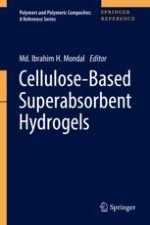2019 | OriginalPaper | Chapter
39. Cellulose-Based Hydrogels as Biomaterials
Authors : Serdar Sezer, İsa Şahin, Kevser Öztürk, Vildan Şanko, Zeynep Koçer, Ümran Aydemir Sezer
Published in: Cellulose-Based Superabsorbent Hydrogels
Publisher: Springer International Publishing
Activate our intelligent search to find suitable subject content or patents.
Select sections of text to find matching patents with Artificial Intelligence. powered by
Select sections of text to find additional relevant content using AI-assisted search. powered by
